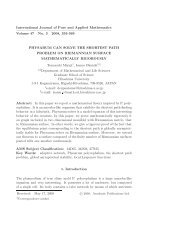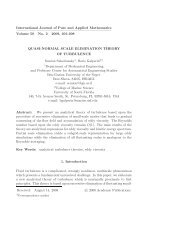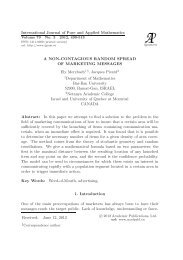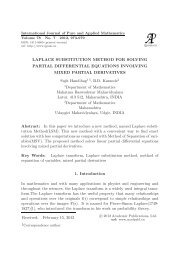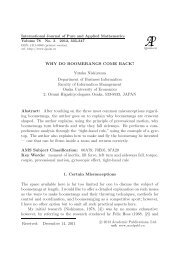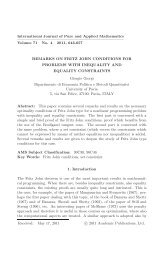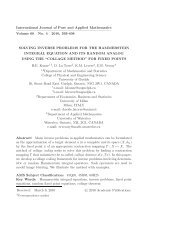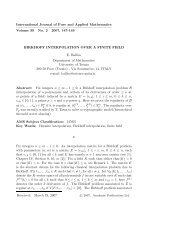FINDING N-TH ROOTS IN NILPOTENT GROUPS AND ...
FINDING N-TH ROOTS IN NILPOTENT GROUPS AND ...
FINDING N-TH ROOTS IN NILPOTENT GROUPS AND ...
Create successful ePaper yourself
Turn your PDF publications into a flip-book with our unique Google optimized e-Paper software.
<strong>F<strong>IN</strong>D<strong>IN</strong>G</strong> N-<strong>TH</strong> <strong>ROOTS</strong> <strong>IN</strong> <strong>NILPOTENT</strong> <strong>GROUPS</strong>... 575<br />
Theorem 2.7 (Prüfer’s First Theorem). Every primary group in which<br />
the orders of the group elements are bounded is a direct sum of cyclic groups.<br />
Proposition 2.8. A ZA-group is Černikov complete if and only if it<br />
contains no proper subgroup of finite index.<br />
Proof. Let G be a Černikov complete group, not necessarily a ZA-group.<br />
If G has a proper subgroup of finite index, then it contains a proper normal<br />
subgroup of finite index. However, a Černikov complete group cannot have<br />
nontrivial finite factor groups because the homomorphic image of a Černikov<br />
complete group is itself Černikov complete and a finite group other than {1}<br />
cannot be Černikov complete.<br />
Now let G be a ZA-group containing no proper subgroup of finite index.<br />
Let n ∈ N, arbitrary. Let H = {xn |x ∈ G} be the subgroup generated by the<br />
n-th power of elements of G. We want to show that H = G. If not, consider<br />
G/H, where H is normal in G. This is either abelian, or (by Grün’s Lemma)<br />
has a nontrivial abelian factor group. For either case, G has a nontrivial abelian<br />
factor group with elements of bounded order. Then by Prüfer’s First Theorem,<br />
this factor group is the direct product of cyclic groups and therefore has a<br />
proper subgroup of finite index, corresponding to a proper subgroup of finite<br />
index in G. This contradicts the assumption.<br />
It follows that since nilpotent groups of class two contain normal subgroups<br />
of finite index, they are not Černikov complete. In particular, the Heisenberg<br />
group is not Černikov complete.<br />
3. Groups with Unique Extraction of Roots<br />
In this section, we will study nilpotent groups and extraction of roots in these<br />
groups. Again, the following has been taken from [10] with exposition.<br />
Definition 3.1. A group G is an R−group if for every a ∈ G and every<br />
n ∈ N, the equation x n = a has at most one solution. In other words, the<br />
extraction of roots is unique and for every pair of elements x and y and every<br />
natural number n, it follows from x n = y n that x = y.<br />
Note that every R−group is torsion-free and all abelian torsion-free groups<br />
are R−groups. However, not every torsion-free group is an R−group. For<br />
example, let G = 〈a,b;a 2 b −2 = 1〉 be the amalgamated free product of two<br />
infinite cyclic groups. G is torsion-free but not an R−group.



